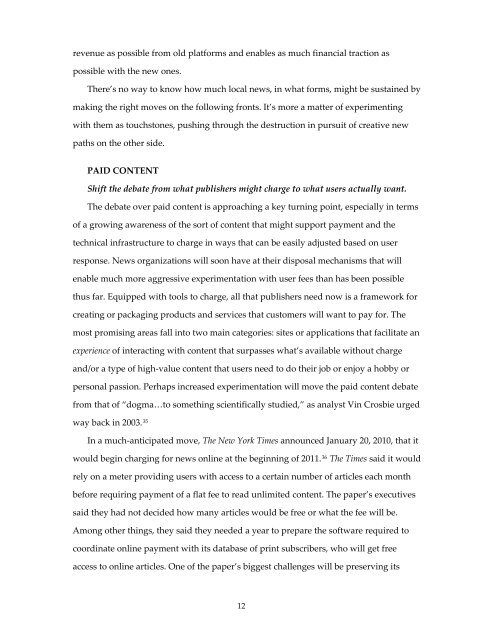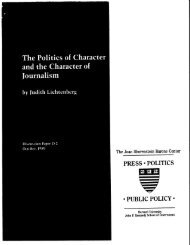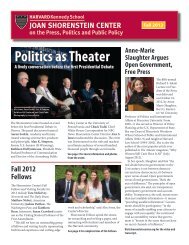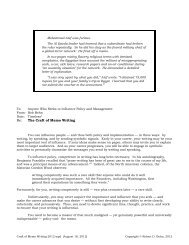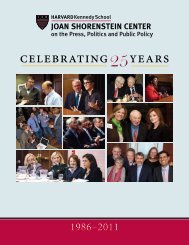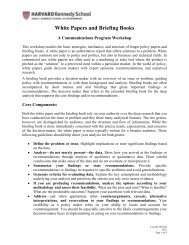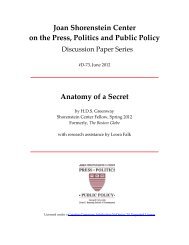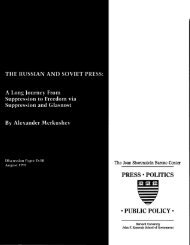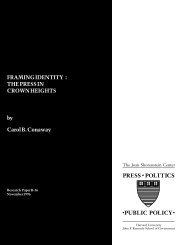A User-First Framework for Sustaining Local News - Harvard ...
A User-First Framework for Sustaining Local News - Harvard ...
A User-First Framework for Sustaining Local News - Harvard ...
You also want an ePaper? Increase the reach of your titles
YUMPU automatically turns print PDFs into web optimized ePapers that Google loves.
evenue as possible from old plat<strong>for</strong>ms and enables as much financial traction as<br />
possible with the new ones.<br />
There’s no way to know how much local news, in what <strong>for</strong>ms, might be sustained by<br />
making the right moves on the following fronts. It’s more a matter of experimenting<br />
with them as touchstones, pushing through the destruction in pursuit of creative new<br />
paths on the other side.<br />
PAID CONTENT<br />
Shift the debate from what publishers might charge to what users actually want.<br />
The debate over paid content is approaching a key turning point, especially in terms<br />
of a growing awareness of the sort of content that might support payment and the<br />
technical infrastructure to charge in ways that can be easily adjusted based on user<br />
response. <strong>News</strong> organizations will soon have at their disposal mechanisms that will<br />
enable much more aggressive experimentation with user fees than has been possible<br />
thus far. Equipped with tools to charge, all that publishers need now is a framework <strong>for</strong><br />
creating or packaging products and services that customers will want to pay <strong>for</strong>. The<br />
most promising areas fall into two main categories: sites or applications that facilitate an<br />
experience of interacting with content that surpasses what’s available without charge<br />
and/or a type of high‐value content that users need to do their job or enjoy a hobby or<br />
personal passion. Perhaps increased experimentation will move the paid content debate<br />
from that of “dogma…to something scientifically studied,” as analyst Vin Crosbie urged<br />
way back in 2003. 35<br />
In a much‐anticipated move, The New York Times announced January 20, 2010, that it<br />
would begin charging <strong>for</strong> news online at the beginning of 2011. 36 The Times said it would<br />
rely on a meter providing users with access to a certain number of articles each month<br />
be<strong>for</strong>e requiring payment of a flat fee to read unlimited content. The paper’s executives<br />
said they had not decided how many articles would be free or what the fee will be.<br />
Among other things, they said they needed a year to prepare the software required to<br />
coordinate online payment with its database of print subscribers, who will get free<br />
access to online articles. One of the paper’s biggest challenges will be preserving its<br />
12


